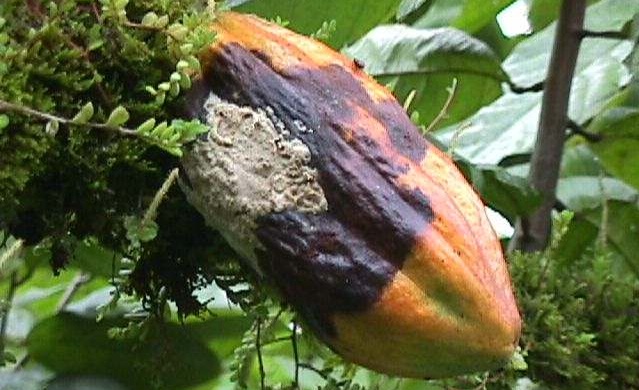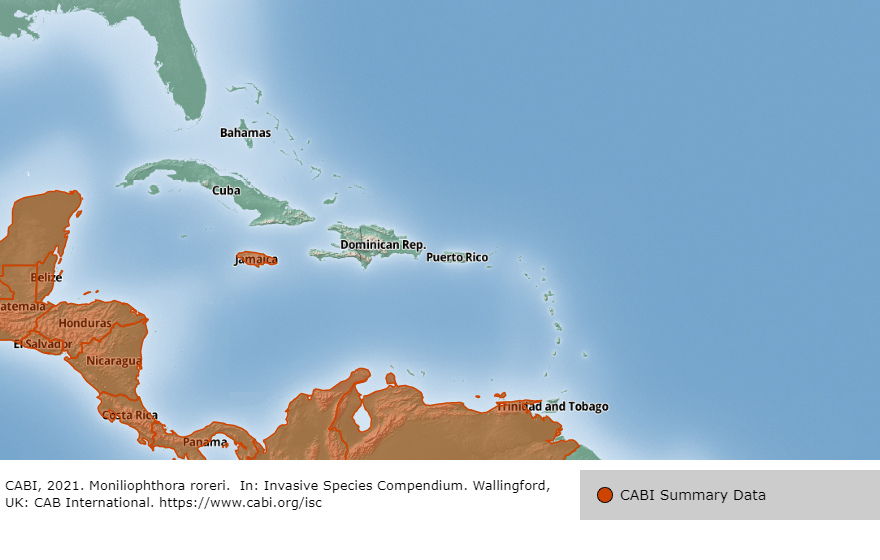
Frosty pod rot, also called Monilia, is an invasive disease affecting cocoa caused by the fungus Moniliophthora roreri. Until the 1950s, frosty pod rot was confined to the North-western South America (Colombia, Ecuador, Western Venezuela) and was not of widespread interest to other cocoa-producing countries. Its appearance in Panama in 1956 and Costa Rica in 1978 increased the geographic confines of the pathogen and changed perceptions of the disease. It has a high potential for transmission, carried by the wind, which extends its range.
Impact
Frosty pod rot produces masses of spores that appear as a white or tan powder on the pod’s surface. The disease distorts the pods; they become asymmetric or develop a mosaic-like pattern of green, yellow, and cream. It rots the pod’s interior. The beans are already destroyed by the time the symptoms begin to surface. Infested plantations may suffer dramatic yield loss, leading to neglect of trees by farmers and complete loss of production. Trinidad and Tobago is the home of fine flavoured Trinitario cocoa and the International Cocoa Genebank (ICGB). Frosty Pod Rot is a threat to cocoa and the ICGB. The prevention of Frosty Pod Rot from invading the cocoa resources of the Caribbean will be of critical importance to the economic well-being and bio-diversity of Trinidad and the rest of the Caribbean.
Control
Avoidance is the best strategy to be followed in countries or areas still free of the disease. Because human-mediated dispersal of this fungus into new areas and countries represents the most serious threat, major efforts should be made to strengthen quarantine measures and educate producers about the risks of moving pods from affected areas. Various cultural, chemical, and biological strategies have been tested for the control of Frosty pod rot. The best time for cultural control is when the symptoms first appear. Suspected pods should be harvested and destroyed by burning before the pod turns frosty.
Countries Affected
Colombia
Ecuador
Western Venezuela
Panama
Costa Rica
Distribution Map (CABI ISC):
